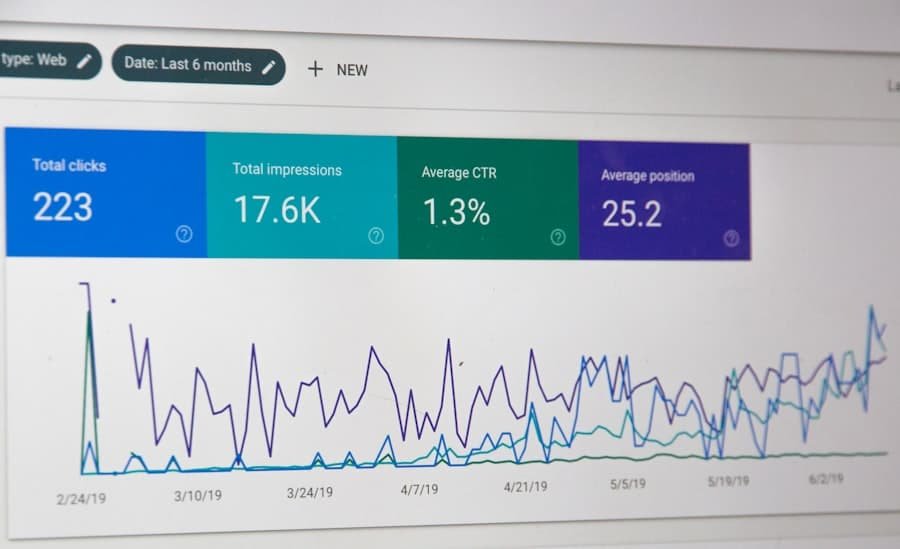In the realm of nonprofit organisations, the quest for efficiency and effectiveness is paramount. As these entities strive to maximise their impact while operating on limited budgets, the concept of zero-overhead nonprofit analytics has emerged as a transformative approach. This methodology seeks to eliminate unnecessary costs associated with data analysis, allowing nonprofits to focus their resources on mission-driven activities rather than administrative overhead.
By leveraging innovative technologies and methodologies, organisations can harness the power of data without incurring significant expenses, thereby enhancing their operational capabilities and decision-making processes. The rise of zero-overhead nonprofit analytics is particularly relevant in an era where data-driven decision-making is becoming increasingly vital. Nonprofits are often inundated with vast amounts of data, ranging from donor information to programme outcomes.
However, without the right tools and strategies in place, this data can remain untapped, leading to missed opportunities for growth and improvement. Zero-overhead analytics not only addresses the financial constraints faced by many nonprofits but also empowers them to utilise data effectively, ensuring that every pound spent contributes directly to their mission.
Summary
- Zero-Overhead Nonprofit Analytics is a revolutionary approach to data analysis for nonprofit organizations.
- Understanding the concept involves using tools and technologies to analyse data without incurring additional costs.
- Implementing Zero-Overhead Nonprofit Analytics can lead to cost savings, improved decision-making, and better resource allocation.
- Tools and technologies such as Google Analytics, Microsoft Power BI, and Tableau can be used for Zero-Overhead Nonprofit Analytics.
- Challenges include data privacy, security, and the need for skilled personnel, but successful case studies show the potential benefits.
Understanding the Concept of Zero-Overhead Nonprofit Analytics
At its core, zero-overhead nonprofit analytics refers to a framework that enables organisations to conduct thorough data analysis without incurring additional costs. This approach is predicated on the idea that nonprofits can leverage existing resources—such as staff expertise, free or low-cost software, and open-source tools—to gather insights from their data. By minimising or eliminating the need for expensive analytics platforms or external consultants, nonprofits can redirect funds towards their core activities, ultimately enhancing their overall impact.
The concept also encompasses a cultural shift within organisations. It encourages nonprofits to foster a data-driven mindset among staff members at all levels. This means that rather than relying solely on a dedicated analytics team, every employee is empowered to engage with data relevant to their roles.
Training and capacity-building initiatives can facilitate this shift, equipping staff with the skills necessary to interpret data and make informed decisions. As a result, the organisation becomes more agile and responsive to changing circumstances, as insights can be generated quickly and efficiently.
Benefits of Implementing Zero-Overhead Nonprofit Analytics

The advantages of adopting zero-overhead nonprofit analytics are manifold. Firstly, by reducing reliance on costly analytics solutions, organisations can allocate more resources towards programme delivery and community engagement. This reallocation not only enhances the effectiveness of their initiatives but also strengthens their overall sustainability.
For instance, a nonprofit focused on education might use the funds saved from analytics costs to develop new learning materials or expand outreach efforts to underserved communities. Secondly, zero-overhead analytics fosters a culture of continuous improvement within nonprofits. By enabling staff members to access and analyse data independently, organisations can identify trends and areas for enhancement more readily.
This proactive approach allows nonprofits to adapt their strategies based on real-time feedback rather than waiting for periodic evaluations. For example, a charity working in healthcare might analyse patient feedback data regularly to refine its services, ensuring that it meets the evolving needs of its beneficiaries.
Tools and Technologies for Zero-Overhead Nonprofit Analytics
A variety of tools and technologies are available to support zero-overhead nonprofit analytics initiatives. Open-source software platforms such as R and Python provide powerful capabilities for data analysis without the associated costs of proprietary solutions. These programming languages offer extensive libraries and frameworks that enable nonprofits to conduct sophisticated analyses, from statistical modelling to machine learning applications.
In addition to programming languages, there are numerous free or low-cost data visualisation tools that can help nonprofits present their findings in an accessible manner. Platforms like Tableau Public and Google Data Studio allow organisations to create interactive dashboards that convey complex information clearly and engagingly. By utilising these tools, nonprofits can share insights with stakeholders, including donors and community members, fostering transparency and accountability.
Moreover, cloud-based solutions have revolutionised the way nonprofits manage their data. Services such as Google Sheets or Airtable provide collaborative environments where teams can input and analyse data in real-time. This accessibility ensures that insights are not siloed within specific departments but are shared across the organisation, promoting a holistic understanding of performance metrics.
Challenges and Considerations for Zero-Overhead Nonprofit Analytics
While the benefits of zero-overhead nonprofit analytics are compelling, there are several challenges that organisations must navigate. One significant hurdle is the potential lack of technical expertise among staff members. Although many tools are designed to be user-friendly, a foundational understanding of data analysis principles is essential for effective implementation.
Nonprofits may need to invest time in training their teams or consider partnerships with educational institutions to build capacity in this area. Data quality is another critical consideration. For analytics to be meaningful, the underlying data must be accurate and reliable.
Nonprofits often grapple with incomplete or inconsistent data due to various factors such as manual entry errors or disparate data sources. Establishing robust data governance practices is crucial to ensure that the information being analysed is trustworthy. This may involve creating standard operating procedures for data collection and management or employing data cleaning techniques to rectify existing issues.
Furthermore, there is the challenge of maintaining stakeholder engagement throughout the analytics process. Nonprofits must communicate the value of data-driven decision-making effectively to ensure buy-in from staff and board members alike. This involves not only demonstrating how analytics can enhance programme outcomes but also addressing any concerns about privacy or data security that may arise.
Case Studies of Successful Implementation of Zero-Overhead Nonprofit Analytics

Several nonprofits have successfully implemented zero-overhead analytics strategies, showcasing the potential of this approach. One notable example is Charity: Water, an organisation dedicated to providing clean drinking water globally. By leveraging open-source tools and engaging volunteers with technical expertise, Charity: Water has developed a robust system for tracking project outcomes and donor engagement without incurring significant costs.
Their use of data visualisation has allowed them to present compelling narratives about their impact, thereby attracting further support from donors. Another illustrative case is that of The Nature Conservancy, which has embraced zero-overhead analytics to enhance its conservation efforts. By utilising free GIS (Geographic Information Systems) software, the organisation has been able to map biodiversity hotspots and assess the effectiveness of its conservation strategies in real-time.
This approach has not only improved their operational efficiency but has also enabled them to communicate their findings effectively with stakeholders, fostering greater collaboration with local communities and governments. These case studies highlight how nonprofits can harness zero-overhead analytics to drive meaningful change while remaining financially sustainable. By prioritising data-driven decision-making and utilising available resources wisely, these organisations have demonstrated that impactful outcomes are achievable without incurring excessive costs.
Tips for Getting Started with Zero-Overhead Nonprofit Analytics
For nonprofits looking to embark on their journey towards zero-overhead analytics, several practical steps can facilitate a successful transition. Firstly, it is essential to conduct an internal assessment of existing resources and capabilities. Understanding the current state of data management within the organisation will help identify gaps in knowledge or technology that need addressing before implementing new analytics initiatives.
Secondly, investing in training and capacity-building for staff is crucial. Workshops or online courses focused on data literacy can empower employees at all levels to engage with analytics confidently. Encouraging a culture of curiosity around data will foster an environment where team members feel comfortable exploring insights and sharing findings with one another.
Additionally, nonprofits should consider forming partnerships with local universities or tech organisations that may offer pro bono support or mentorship in analytics practices. Collaborating with external experts can provide valuable guidance while also expanding the organisation’s network within the community. Finally, it is vital for nonprofits to establish clear goals for their analytics initiatives from the outset.
Defining specific objectives will help guide the selection of tools and methodologies while ensuring that efforts remain aligned with the organisation’s mission.
Conclusion and Future Trends in Zero-Overhead Nonprofit Analytics
As the landscape of nonprofit work continues to evolve, zero-overhead nonprofit analytics stands out as a promising approach for organisations seeking to maximise their impact while minimising costs. The increasing availability of open-source tools and cloud-based solutions will likely further democratise access to powerful analytics capabilities, enabling even the smallest nonprofits to harness data effectively. Looking ahead, we may see a growing emphasis on integrating artificial intelligence (AI) into zero-overhead analytics frameworks.
AI technologies have the potential to automate routine data analysis tasks, allowing staff members to focus on interpreting insights rather than getting bogged down in technical details. This shift could lead to even greater efficiencies within nonprofit operations. Moreover, as more organisations adopt zero-overhead analytics practices, there will likely be an increased demand for collaboration across sectors.
Nonprofits may find opportunities to share best practices and resources with one another, fostering a community of learning that enhances overall effectiveness in addressing social challenges. In summary, zero-overhead nonprofit analytics represents a significant opportunity for organisations committed to making a difference in their communities while navigating financial constraints. By embracing this approach, nonprofits can unlock the full potential of their data and drive meaningful change in an increasingly complex world.
If you are interested in improving the efficiency of your nonprofit organisation, you may also find the article 6 Questions to Ask Yourself Before Choosing a Resume Service helpful. This article provides valuable insights into selecting the right service to enhance your professional image and attract potential donors or partners. By carefully considering these questions, you can ensure that your nonprofit is well-equipped to achieve its goals and make a positive impact in the community.
FAQs
What is Zero-Overhead Nonprofit Analytics?
Zero-Overhead Nonprofit Analytics refers to the use of data analysis and reporting tools by nonprofit organizations without incurring any additional costs. This approach allows nonprofits to make informed decisions and measure their impact without diverting funds from their core mission.
How does Zero-Overhead Nonprofit Analytics work?
Zero-Overhead Nonprofit Analytics works by leveraging free or low-cost data analysis tools, such as Google Analytics, Microsoft Power BI, or Tableau Public, to collect, analyze, and visualize data related to a nonprofit’s operations, fundraising efforts, and impact. By using these tools, nonprofits can gain valuable insights without the need for significant financial investment.
What are the benefits of Zero-Overhead Nonprofit Analytics?
The benefits of Zero-Overhead Nonprofit Analytics include the ability to make data-driven decisions, track and measure the impact of programs and initiatives, identify areas for improvement, and communicate results to stakeholders. By using free or low-cost analytics tools, nonprofits can allocate more resources to their mission-critical activities.
Are there any limitations to Zero-Overhead Nonprofit Analytics?
While Zero-Overhead Nonprofit Analytics can provide valuable insights, there are limitations to consider. Free or low-cost analytics tools may have limitations in terms of data storage, processing power, and advanced features compared to their paid counterparts. Nonprofits also need to invest time and resources in learning how to use these tools effectively.
How can nonprofits get started with Zero-Overhead Nonprofit Analytics?
Nonprofits can get started with Zero-Overhead Nonprofit Analytics by identifying their data needs, exploring free or low-cost analytics tools, and investing in training for staff members. It’s important to establish clear goals for data analysis and ensure that the chosen tools align with the organization’s needs and capabilities.
